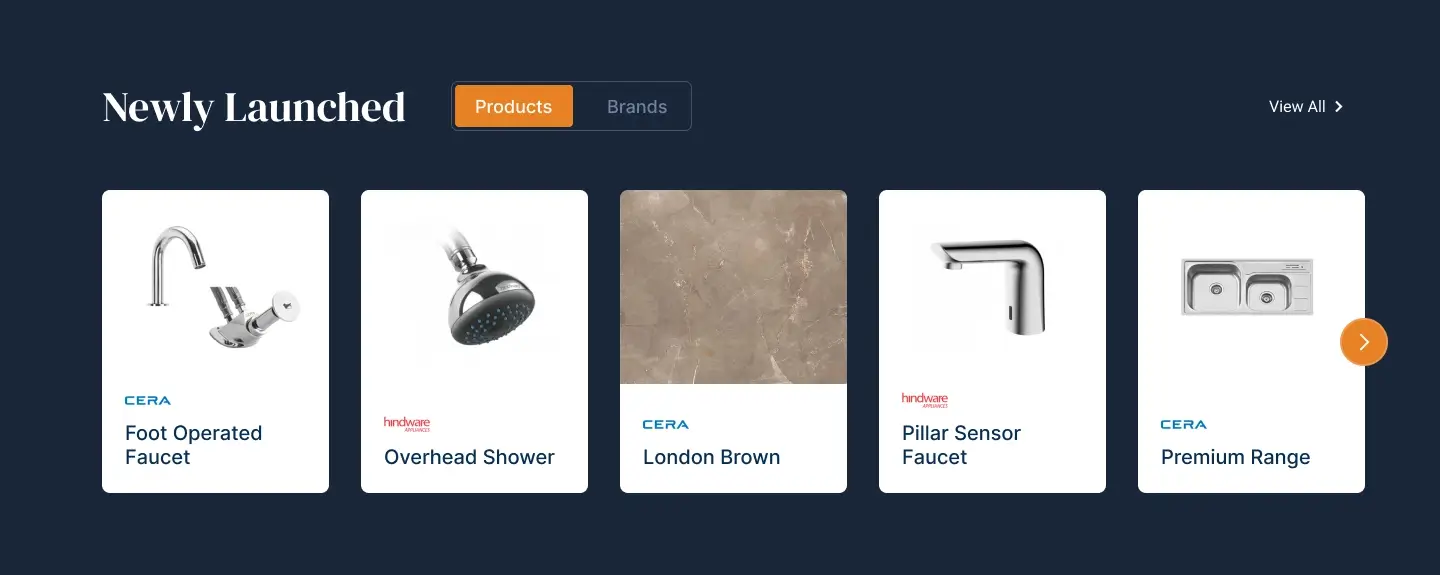
Table of Contents
Quick Summary
- You may be dealing with drain fly larvae, earthworms, or redworms s caused by poor sanitation or a drainage problem.
- Scrub the bowl and clean out the toilet to the sewer using disinfectants. Use Bleach, vinegar, and baking soda, or toilet scrubbers will do fine.
- Make sure that you seal any cracks or leaks that could allow worms to enter the drain line.
- If the area is exposed to moisture, you can expect to deal with worms. You can use exhaust fans or keep the window open to prevent moisture buildup.
- Consider using an enzyme-based toilet cleaner regularly to keep bacteria and worms from repopulating.
- If the worms continue or if you suspect hidden drain problems elsewhere, call in a licensed plumber to inspect the situation.
- Maintain your toilet’s hygiene, downspout areas, and fix any drainage issues you may have to eliminate worms from your toilet.
Worms in toilet are not only unsightly, but they also indicate an underlying problem in your bathroom. So, how to get rid of worms in toilet?
If you are health-conscious and particular about cleanliness, maintaining a spotless toilet is a top priority. However, scrubbing the toilet bowl and removing plaque deposits from the grout and tiles is not the end of your toilet cleaning checklist. You must ensure your toilet remains free of all types of worms.
How to get rid of the worms from the toilet? If this thought has been lingering in your mind, then you must first know that getting rid of worms becomes easier when you understand the root cause. Why do worms appear even when the toilet is regularly cleaned and maintained?
Let’s begin by exploring the most common reasons behind their presence. Once we identify the triggers, eliminating them becomes a much simpler task.
The Health Risks Behind the Worms in Your Toilet
Worms in toilets may not be deadly, but their presence is indeed unsightly and alarming. Beyond the unpleasant appearance and discomfort, they cause, these toilet-drain worms are a sign of hidden cleaning issues and potential health risks lurking in what may appear to be a clean toilet. Let’s take a closer look.
A common myth is that the toilet bowl and floor are the only spots to focus on during cleaning. But, in reality plumbing lines and sewage connections are important when it is about to maintain total hygiene in a toilet. If a home’s plumbing system, water reservoir, or sewage lines are poorly maintained or outdated, the risk of worm infestation increases significantly.
- If you use a toilet, which is not thoroughly clean, it may pose certain health risks. The presence of the toilet drain worms and larvae, like drain flies or bloodworms, usually indicates organic buildup in the sewage lines or stagnant water. While these worms may not be harmful, they can carry dangerous bacteria like E. coli and Salmonella.
- Adult drain flies often shed their scales into the air, which can trigger respiratory issues for people using the bathroom.
- The common bathroom worms are not particularly harmful, but they can carry unhealthy pathogens, including fungi, viruses, and bacteria.
Worms In Toilet: What’s The Reasons Behind the Unwanted Entry?
To put it simply, the main reason for worm entry into a toilet is a build-up of cracks, which are both signs of lapses in your cleaning routine. When organic waste accumulates under the toilet bowl rims, the hidden area becomes a feeding and breeding ground for worms and larvae.
Secondly, a cracked sewer pipe is generally the most common entry point for earthworms. In such cases, repairing the sewer system is usually the best solution to stop further intrusion.
Common Worm Types Found in a Toilet
Based on long-time observation, a few specific types of toilet drain worms are seen or encountered in toilets. These include:
Drain Fly Larvae
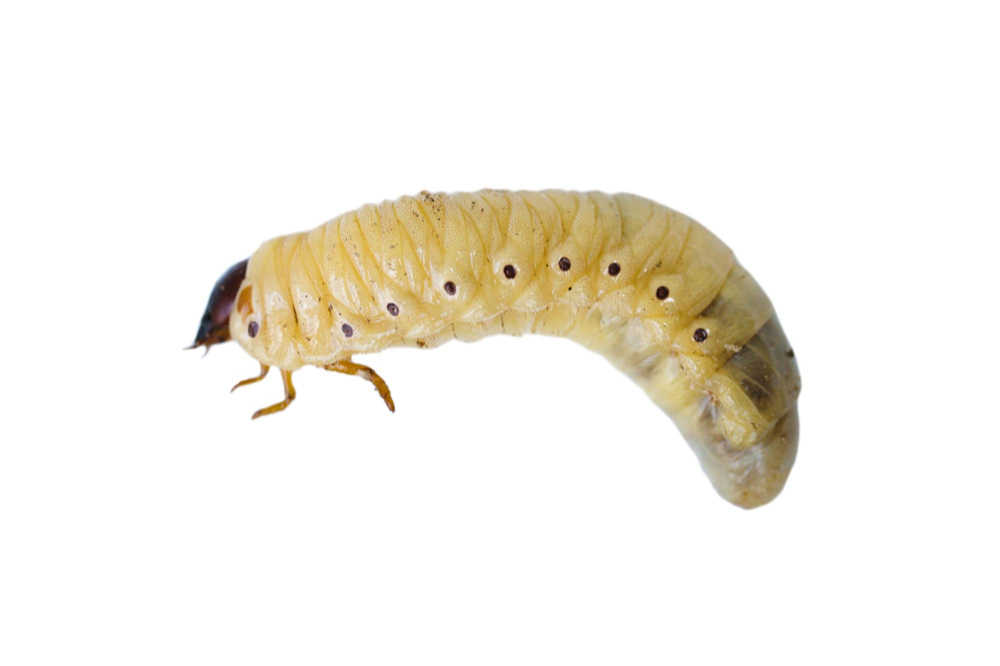
Drain fly larvaeare not actual worms; they are the larvae of moth flies. These flies breed in still water. These larvae feed on organic matter that accumulates in sewage pipes, which serve as their gateway into toilets. The presence of drain fly larvae in toilet indicates that your toilet’s sewage pipe is not adequately clean.
1. Earthworms

Earthworms are mostly found in soil and are generally harmless. But if these worms gain access to the plumbing system through cracked pipes or sewage leakage, they can easily make their way into toilets.
2. Sewer Worms or Bloodworms
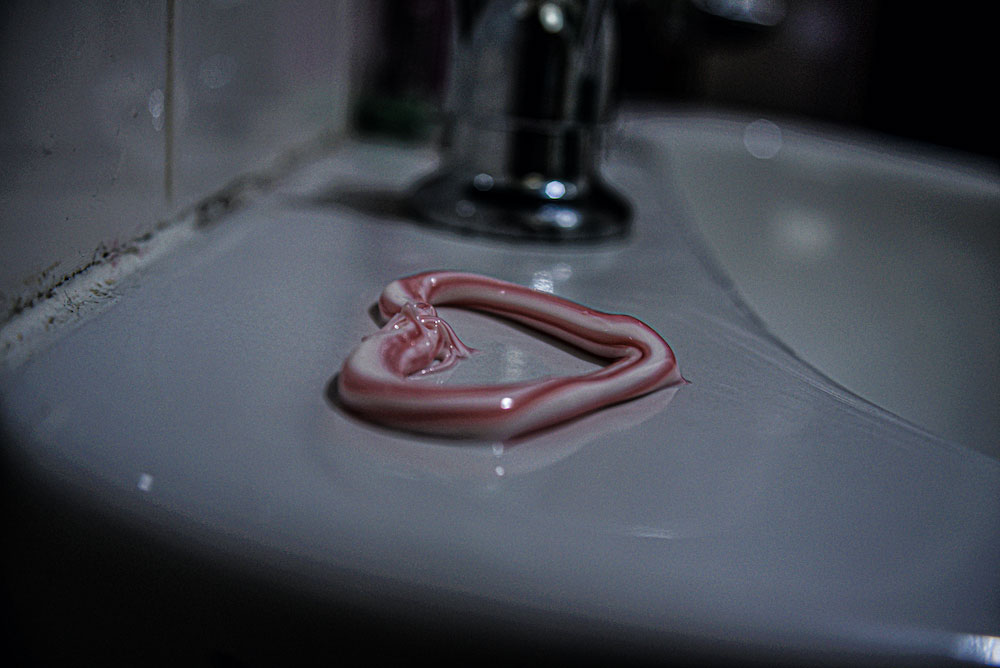
Sewer worms, also known as bloodworms, are usually pink or red. They are the larvae of midge flies and serve as a sure indication of organic matter build-up in your sewage system. The presence of bloodworms in toilet suggests that the sewage line requires immediate cleaning.
3. Brown Worms
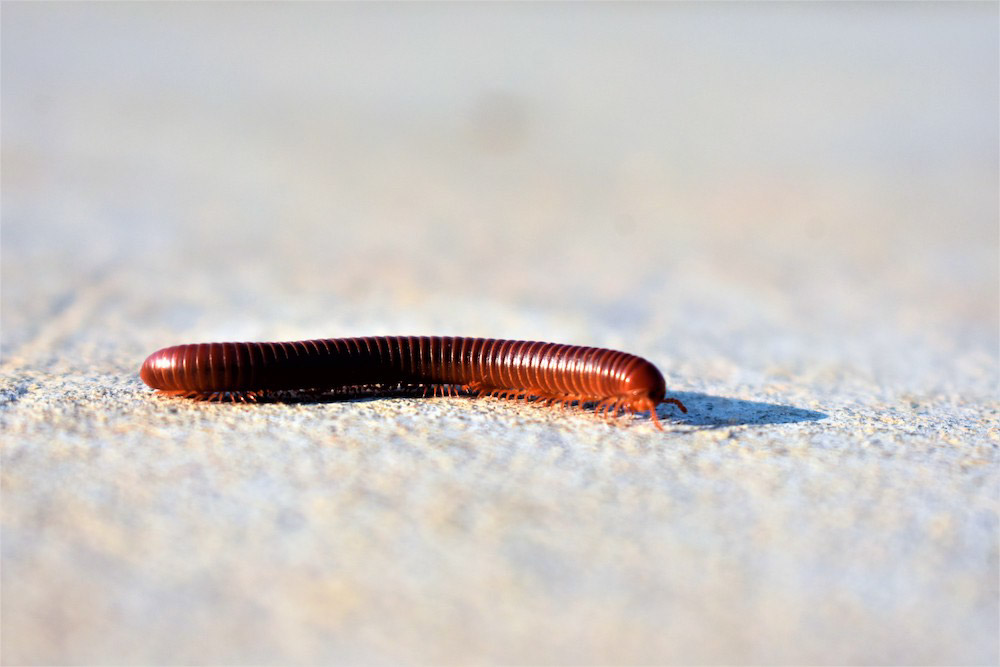
These long, earthworm-like creatures are not regular intruders in toilets. They typically enter through cracked sewer pipes. If you notice these worms in your toilet, there is likely a breach or damage in your sewer pipeline.
4. Horsehair Worms
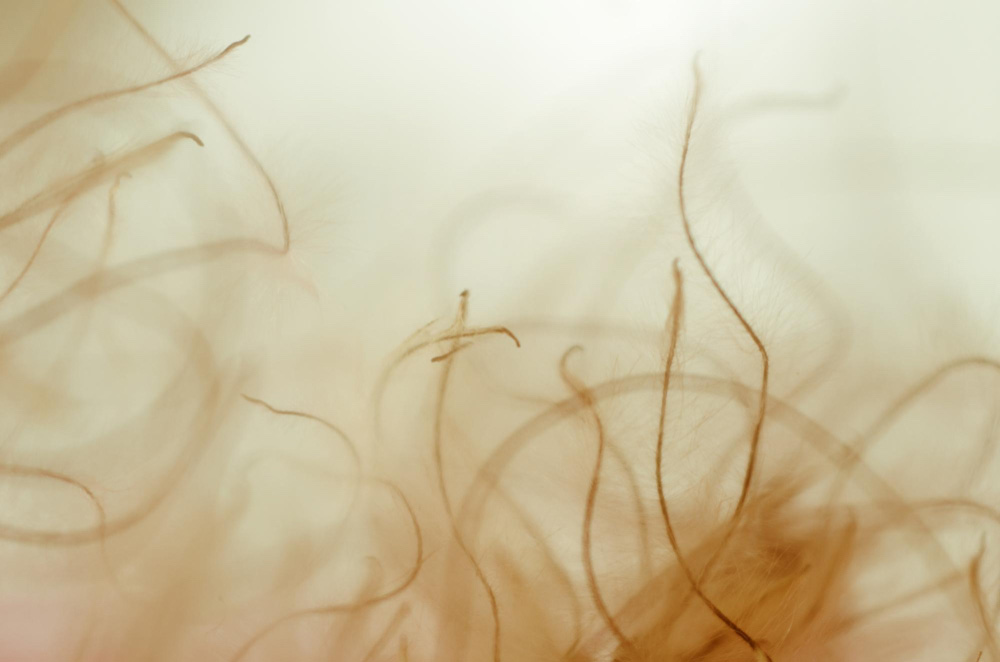
These worms resemble horsehair, thin, sleek, and long. They usually enter toilets through insects like crickets and cockroaches, which act as hosts. Although horsehair worms are harmless, sealing entry points and ensuring proper pest control can help prevent their intrusion.
However proper sealing and pest control in home can restrict these toilet intruders.
5. Tiny Black Worms
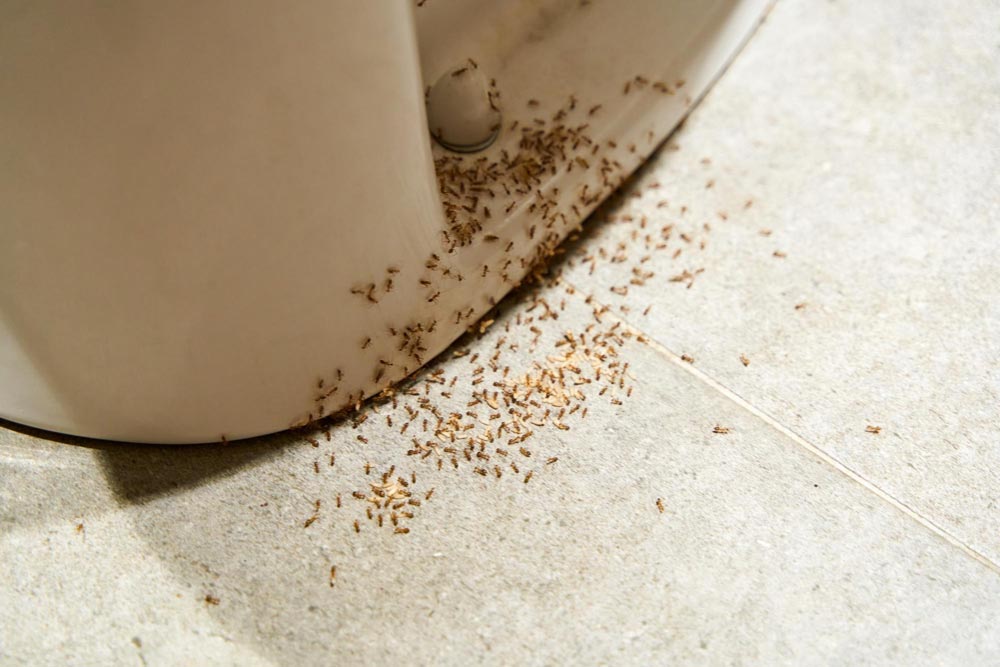
Tiny black worms are the mature drain fly larvae. They thrive with decayed organic matter, commonly accumulated in toilet drains and damaged sewage pipes. Only a professional cleaning service can remove them from your toilet.
Now we’ve listed the common types of worms found in toilets for your reference, it’s important to note that these pests may still appear despite regular cleaning.
Gharpedia has listed the most probable causes of the entry of worms and larvae in toilets so that you can identify and resolve the root of the issue efficiently.
Causes of Worms and Drain Fly Larvae Entry in Toilets
There are numerous reasons behind the unwarranted entry of larvae and pesky worms into a toilet. However, we have listed the most common causes below for your easy reference and inspection before calling an expert.
Plumbing Leaks: Leaky pipes in the plumbing system create a moist environment, which serves as a perfect breeding ground for worms and parasites. While leaks in exposed areas often get noticed quickly, hidden leaks under tiles or behind covers may take time to detect, causing more damage in the long run.
Cracked Pipes: Cracks in the plumbing system, especially in older constructions, can trap soil and organic debris, making them a prime entry point for worms. A cracked sewage pipe, in particular, is one of the most common gateways for worms to enter your toilet.
Septic Tank Issues: If a septic tank is left uncleaned for a long time, it becomes a thriving breeding ground for worms and larvae. These pests can then easily enter your toilet and create a mess.
Inadequate Maintenance of Bathroom: Infrequent or inadequate cleaning can lead to organic build-up in your toilet bowl and drain areas. This not only affects hygiene but also attracts various pests, including worms and drain fly larvae, to your washroom.
Excessive Humidity: Poor ventilation in a bathroom often leads to high humidity and moisture accumulation. Such conditions create an ideal environment for pesky worms and larvae to breed and thrive in your toilet.
How to Stop/Eliminate Worms’ Entry in a Toilet?

If there is a problem, there must be a solution. We have learned the common reasons behind worms entering a toilet. Now, it’s time to explore effective remedies to eliminate this issue. Read more here about how to get rid of worms in toilet.
1. Invest Time in Regular Cleaning of the Toilet:
Systematic cleaning is the key to prevent worm infestations in your toilet. Always you should use a proper toilet cleaner, a clean and dry scrubber brush and disinfectants. Do not neglect the toilet bowl’s rim or the surrounding areas, as this can lead to unpleasant build-up and create a breeding ground for worms.
2. Keep an Eye on Your Plumbing Line:
Take good care of your plumbing system. Stay alert for any leaks or cracks in the pipelines. Ensure your home is properly sealed to restrict worms from entering your safe space. If you find any leak or crack in the plumbing system, call a plumber immediately.
3. Keep the Ventilation System Up to the Mark:
Always maintain a proper ventilation system in your toilet. Install an exhaust fan to reduce humidity. Also, the fan will help restrict the entry of worms.
4. Use an Enzyme Cleaner:
You may use an enzyme cleaner to remove organic build-up in your sewage pipes. This helps prevent worm infestations at the source.
5. Hire a Professional:
Sometimes, DIY methods aren’t enough to control a worm infestation in the toilet. When that happens, it’s best to call a professional plumber.
DIY Remedies to Eliminate Worms in Toilet
1. How to Get Rid of Drain Fly Larvae from Your Toilet?
To eliminate drain fly larvae in toilet, you must first identify the breeding areas of drain flies, which include wet places such as sewers, drains, and septic tanks.
Once you have identified these spots, you will next need salt, vinegar, baking soda, and sticky tape. Stick the tape (sticky side down) over the top of the drain and leave it overnight. Any fly attempting to exit will get trapped on the tape. After capturing the flies, the next step is to destroy the larvae.
- Mix one cup of vinegar, baking soda ½ cup, and salt½ cup.
- Pour the mixture into the drain and leave it overnight
- In the morning, pour boiling water down the drain to sterilise the area and kill any remaining larvae.
- Repeat the process after a week if you notice drain flies or larvae.
2. How to Get Rid of Bloodworms in Your Toilet?
To eliminate bloodworms, make sure that you clean and disinfect your toilet thoroughly. Use baking soda and vinegar mix to disinfect your toilet.
- Now mix 1/3 cup of baking soda with a cup of vinegar. Fill this mixture into a spraying bottle. Ensure you have prepared enough mixture based on your requirement.
- Spray the solution generously on drains and toilet surfaces.
- Rinse the area with boiling water to remove any remaining organic matter.
3. How to Get Rid of Earthworms in The Toilet?
It is rare to find earthworms in toilets. However, if you find one, it is important to remove it immediately and find the main cause behind its entry also.
You can sprinkle powdered salt, toilet lotion or curry salt to get rid of earthworms from your toilet. However, the best way to keep them away is to seal the cracks in the plumbing system.
4. How to Get Rid of Horsehair Worm in Your Toilet?
How to get rid of horsehair worms in toilet? You can get rid of horsehair worms with a simple DIY solution. Mix baking soda and vinegar and spray the solution when you suspect an infestation. If you suspect the worms are still present, clear the bathroom area and spray the solution thoroughly over all surfaces. This will kill any eggs and prevent the reappearance of these parasites.
Final Thoughts
Worms in a toilet are a clear sign that either the toilet is not well-maintained or there are cracks or leakages in the sewer pipes connected to the bathroom. Regular deep cleaning of the toilet bowl, along with periodic inspection and cleaning of sewage pipes, can help prevent the entry of pesky worms. If worms continue to appear despite regular cleaning and maintaining hygiene, it’s advisable to hire a professional to inspect the issue with the necessary expertise.
Read More: 9 Smart Tips to Eliminate Bathroom & Toilet Smells From Your House
FAQs on Getting Rid of Worms from Toilet
1. How Do I Permanently Get Rid of Drain Worms?
If your drains haven’t been maintained for a while, the first step is to clean them using a commercial drain cleaning solution. Alternatively, you can try a mixture of baking soda and white vinegar. This solution helps break down and remove the organic material buildup inside the pipes.
2. Are Drain Worms Harmful?
Drain worms do not bite or transmit blood-borne diseases to humans, unlike some other insects. However, the health risk lies in their origin. They thrive in dirty, bacteria-rich environments. If they emerge from sink drains, they can potentially spread bacteria and contaminate food surfaces.
3. How Often Should I Clean Drains?
- Kitchen drains: Clean monthly to prevent grease and food buildup.
- Bathroom drains: Clean every three to four months, as hair and soap scum tend to accumulate. Main sewer line: Clean annually to avoid major blockages or backups.
References
Matěj Hušek, Jaroslav Moško, Michael Pohořelý (2022) in Sewage sludge treatment methods and P-recovery possibilities: Current state-of-the-art, https://doi.org/10.1016/j.jenvman.2022.115090 in Journal of Environmental Management, Volume 315, 1 August 2022, 115090 [Online]Available fromhttps://www.sciencedirect.com/science/article/abs/pii/S0301479722006636
Here’s a video to sum up all the points mentioned above



